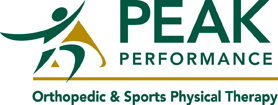What is the most common way to cause injury to the rotator cuff?
What does rotator cuff pain feel like?
How do you know if you have torn the rotator cuff?
How do you manage a rotator cuff tear?
The rotator cuff (RC) consists of four muscles (supraspinatus, infraspinatus, teres minor, and subscapularis) that originate from the scapula (shoulder blade) and attach to the upper most portion of the humerus (upper arm bone). The RC muscles each have an independent action but also work together as a group to stabilize the shoulder socket in allowing functional motion of the shoulder. RC injuries can involve any of the four rotator cuff tendons or may involve multiple tendons. RC injuries can vary from overuse tendonitis to full thickness tendon ruptures. Chronic degenerative tears, as seen in middle to older age adults, are most common and usually occur as the tendon gradually frays and becomes fibrotic. The supraspinatus is the most common RC tendon injury primarily due to its location and action. The supraspinatus tendon lies in a space just beneath the acromion process (outer tip of the shoulder blade) and just above the shoulder socket. Inherently, this space develops arthritic changes and narrows over time producing an impingement effect. Over the course of time with normal use of your arms, especially overhead, the supraspinatus tendon degenerates and weakens.
Pain from an inflamed and/or partially torn RC typically presents over the outer portion of the shoulder, often with radiation down the outside of the upper arm. Pain can vary from a dull ache, in particular at rest or when lying down, to a sharp pain with certain movements such as reaching out away from your body. In cases of a fully torn RC, it is common to not have any pain as the tendon and nerve endings have been completely severed. You likely have a partially torn RC tendon if pain is worsened with resisted activities with your arm moving out away from your body or overhead. You are likely to have a full rupture if you are unable to move your arm away from your body without shrugging your shoulder to compensate.
If you suspect injuring your RC, try to avoid lifting any significant weight with your arms that would force your elbow to leave your side. Try resting from above shoulder height work activities for a couple of weeks and try taking over the counter anti-inflammatories while trying gentle mobility exercises. X-rays are not usually beneficial in diagnosing RC injuries and in most cases the RC will heal with the proper rest and exercises. An MRI is the preferred imaging test to confirm a RC tear but are expensive and usually not necessary unless the condition is not improving after 6-8 weeks of conservative management. Cortisone injections may be beneficial in acute cases but are usually unsuccessful in relieving pain in more chronic conditions. If symptoms persist for longer than 10-14 days without any sign of improvement, consult with a physical therapist to help guide you with the most appropriate exercises. In most cases, rotator cuff injuries can heal without surgical intervention. Physical therapy, with proper exercise progression, can promote tendon healing and strengthen the uninvolved rotator cuff muscles and surrounding musculature.
~Dr. Sean White, DPT, OCS, Cert MDT

